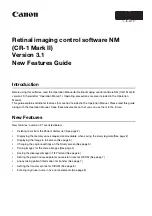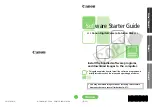
112
ExtremeWare 7.2e Installation and User Guide
Quality of Service (QoS)
Configuring QoS
To configure QoS, you define how your switch responds to different categories of traffic by creating and
configuring QoS profiles. You then group traffic into categories (according to application, as previously
discussed) and assign each category to a QoS profile. Configuring QoS is a three-step process:
1
Configure the QoS profile.
QoS profile
—A class of service that is defined through prioritization settings. The level of service
that a particular type of traffic or traffic grouping receives is determined by assigning it to a QoS
profile.
2
Create traffic groupings.
Traffic grouping
—A classification or traffic type that has one or more attributes in common, such as
a physical port. You assign traffic groupings to QoS profiles to modify switch forwarding behavior.
Traffic groupings transmitting out the same port that are assigned to a particular QoS profile share
the assigned prioritization characteristics, and hence share the class of service.
3
Monitor the performance of the application with the QoS monitor to determine whether the policies
are meeting the desired results.
The next sections describe each of these QoS components in detail.
QoS Profiles
A QoS profile defines a class of service by specifying traffic behavior attributes, such as bandwidth. The
parameters that make up a QoS profile include:
• Priority
—The level of priority assigned to a hardware queue on a physical port. There are eight
different available priority settings. By default, each of the default QoS profiles is assigned a unique
priority. You would use prioritization when two or more hardware queues on the same physical port
are contending for transmission on the same physical port, only after their respective bandwidth
management parameters have been satisfied.
—
When configured to do so, the priority of a QoS profile can determine the 802.1p bits used in the
priority field of a transmitted packet (described later).
—
The priority of a QoS profile determines the DiffServ code point value used in an IP packet when
the packet is transmitted (described later).
A QoS profile does not alter the behavior of the switch until it is assigned to a traffic grouping. Recall
that QoS profiles are linked to hardware queues. There are multiple hardware queues per physical port.
By default, a QoS profile links to the identical hardware queue across all the physical ports of the
switch.
The default QoS profiles cannot be deleted. Administrators do not have the authority to create a QoS
profile. Also by default, a QoS profile maps directly to a specific hardware queue across all physical
ports. The settings for the default QoS parameters are summarized in Table 22.
Table 22: QoS Parameters
Profile Name
Hardware Queue Priority
Buffer
Minimum
Bandwidth
Maximum
Bandwidth
Qp1
Q0
Low
0
0%
100%
Summary of Contents for ExtremeWare 7.2e
Page 14: ...14 ExtremeWare 7 2 0 Software User Guide Contents...
Page 18: ...18 ExtremeWare 7 2e Installation and User Guide Preface...
Page 80: ...80 ExtremeWare 7 2e Installation and User Guide Accessing the Switch...
Page 102: ...102 ExtremeWare 7 2e Installation and User Guide Virtual LANs VLANs...
Page 108: ...108 ExtremeWare 7 2e Installation and User Guide Forwarding Database FDB...
Page 180: ...180 ExtremeWare 7 2e Installation and User Guide Security...
Page 194: ...194 ExtremeWare 7 2e Installation and User Guide Ethernet Automatic Protection Switching...
Page 218: ...218 ExtremeWare 7 2e Installation and User Guide Spanning Tree Protocol STP...
Page 248: ...248 ExtremeWare 7 2e Installation and User Guide Interior Gateway Protocols...
Page 256: ...256 ExtremeWare 7 2e Installation and User Guide IP Multicast Routing...
Page 308: ...308 ExtremeWare 7 2e Installation and User Guide Using ExtremeWare Vista on the Summit 400...
Page 316: ...316 ExtremeWare 7 2e Installation and User Guide Technical Specifications...
Page 324: ...324 ExtremeWare 7 2e Installation and User Guide Software Upgrade and Boot Options...
















































